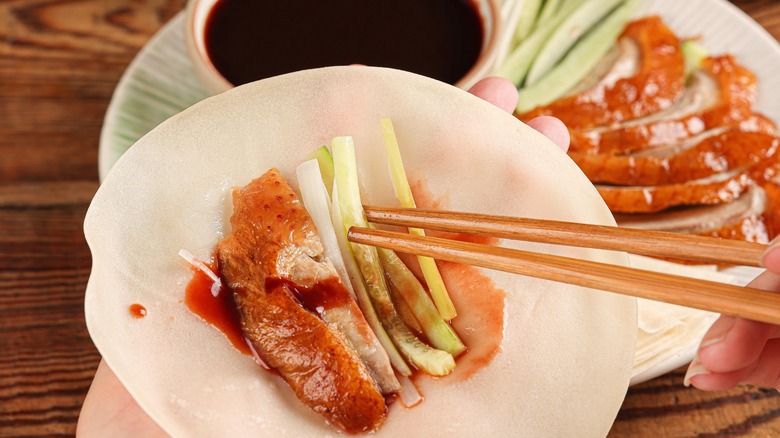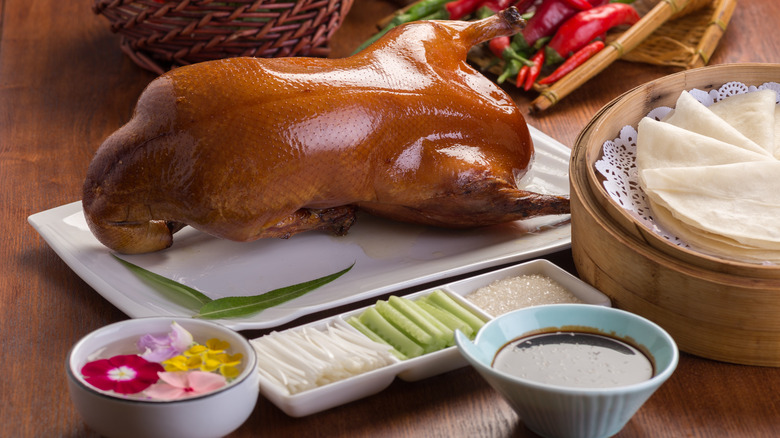How To Properly Eat Peking Duck
Peking duck, originating from Beijing, China, is one of those unforgettable dishes that requires a ritual for maximal enjoyment. Unlike other East Asian dishes, often paired with rice or noodles, Peking duck comes with paper-thin pancakes or fluffy, white buns. In a sense, Peking duck is more of an appetizer than a main course.
The proper way to savor Peking duck is an art. Firstly, the dish requires some assembly on your end. At higher-end establishments, a chef will masterfully slice a whole duck before you tableside. Alongside the freshly sliced, crispy-skinned duck is an array of condiments, granulated sugar, and a sauce, be it plum sauce or hoisin sauce. Typically, you will also get a steamer basket full of thin Mandarin pancakes, which is the more popular way of serving Peking duck these days. Some restaurants serve Peking duck with lotus leaf bao (gua bao) instead.
Then comes the fun part: the assembly. To properly enjoy Peking duck, first dip the duck skin in a little sugar. Wipe sauce over the pancake, then add the duck and condiments like sliced scallions, cucumbers, and melon, and finally, roll up the pancake and enjoy, like a spring roll. Note that you can also dip the duck in the sauce to use it as a brush to spread the sauce over the pancake. If using lotus leaf bao, you would assemble a mini duck sandwich.
The art of relishing Peking duck, from savoring each bite to using every part
Assembling Peking duck at the table properly will result in neatly wrapped packages of delight. Each bite offers crispy, slightly sweetened duck skin, succulent and juicy meat, rich hoisin or plum sauces, and fresh condiments. The plain pancake serves as a chewy and enjoyable vessel. And all the flavors complement and balance each other out. With Peking duck, you're not drowning the roasted duck in a noodle soup or adding it simply to rice but elevating it with an interactive, unforgettable, timeless dish.
What happens to the rest of the duck once the chef removes all the skin and meat? In many Chinese restaurants, diners may have the opportunity to make the most out of every part of the duck, sometimes with an upcharge. You can request the restaurant to craft a delicious double-boiled duck soup from the remaining parts of the roasted duck. Alternatively, you can ask to have the rest of the duck chopped up and packed to take home. Once at home, you can use the rest of the duck to make congee or soup. This way, no parts of the duck are wasted.
So, the next time you're about to relish Peking duck, embrace the interactive process and savor every bite, which starts with eating it properly.

